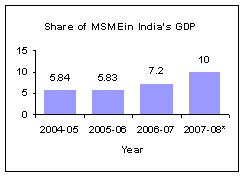“Startup”, “Entrepreneurship”, “Venture Capital”, “Social Media”, “twitter”, “Facebook”. All the wrong kind of tags are mightily sized on the blog of an entrepreneur who is not building a product around these tags.
An entrepreneur’s job is to build a product, do sales/marketing, evangelize the same and acquire customers! Simple. However, most of the times the evangelism is around entrepreneurship, startup culture, raising money, etc. Instead, the talk should be around the code you write, the product development you do, the travel to the customers and the mechanics surrounding the business.
Either the tags are incorrect or the right kind of evangelism is missing.
So, if you are a startup entrepreneur, don’t talk about startups, entrepreneurship, but talk about product, technology, sales/marketing, user experience, how you scale, how you fix bugs, how you prioritize your tasks, your hardware/software architecture, etc. Those should be the mightiest tags in the tag cloud. The former is implied. It is okay to talk about and evangelize things un-related to your business — but that should be 20% of the chatter.
Here are three tag clouds from the blogs of entrepreneurs who I know for sure are working in areas unrelated to the tag sizes. Guess what is what:

Do this little test:
- Go to a tag cloud generator like wordle/tagcrowd
- Point it to your feed
- Analyze the results
- What are the dominating words? If the words related to your technology, product, domain are not dominating the tag cloud, then you need to rethink
- If you are good in step #4 then analyze your competition’s tag cloud — if they are caught napping, then you are doing your job well.
 for the fledgling sector including the government’s
for the fledgling sector including the government’s 
 way. The dream could be a INR 100 crore product or something as complex as an ERP on the web to a even more complicated, a Hospital Information Systems (.. search engines? they are easier to build these days).
way. The dream could be a INR 100 crore product or something as complex as an ERP on the web to a even more complicated, a Hospital Information Systems (.. search engines? they are easier to build these days). fixed after 15 phone calls only to be broken again. A non-delivery of 1Mbps Internet connection from Tata Indicom leads to only 75% of the subscription amount after several phone calls and 8 months of delays. God knows how much the cellular operators are cheating in billing for short minutes and dropped calls. Every month I get charged for roaming even when I haven’t left the home cellular network. The biggest grief is against some of the large public sector companies operating as corporations who do not even have a ‘tangible’ customer service line. The so called mega retail stores have the shoddiest of services without any accountability from the local Food & Drug or health departments/administration.
fixed after 15 phone calls only to be broken again. A non-delivery of 1Mbps Internet connection from Tata Indicom leads to only 75% of the subscription amount after several phone calls and 8 months of delays. God knows how much the cellular operators are cheating in billing for short minutes and dropped calls. Every month I get charged for roaming even when I haven’t left the home cellular network. The biggest grief is against some of the large public sector companies operating as corporations who do not even have a ‘tangible’ customer service line. The so called mega retail stores have the shoddiest of services without any accountability from the local Food & Drug or health departments/administration. As a Founder, CEO, whatever of the startup — one thing you would be doing in your journey would be
As a Founder, CEO, whatever of the startup — one thing you would be doing in your journey would be